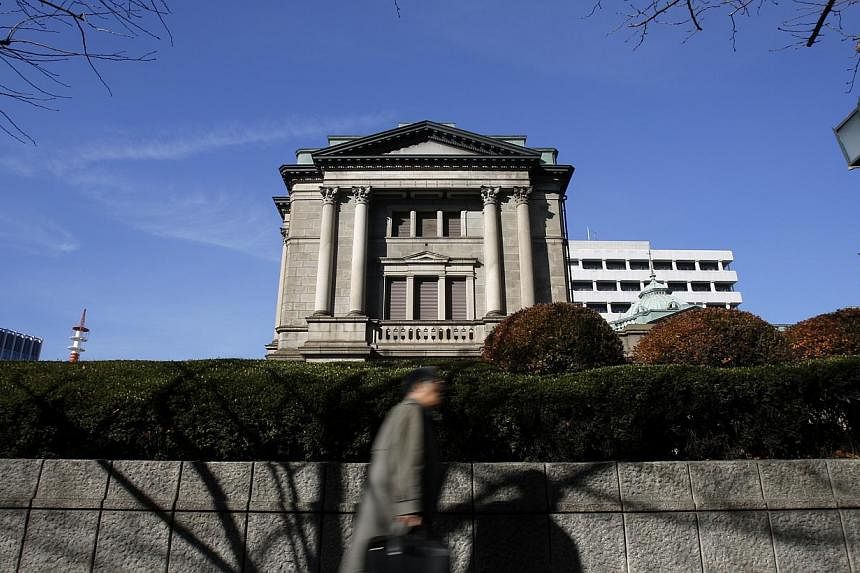TOKYO (Reuters) - The Bank of Japan maintained its massive monetary stimulus on Friday and offered a slightly more upbeat view of the economy, unfazed by first-quarter GDP data that offered mixed signs on the strength of the recovery.
The central bank also revised up its assessment on private consumption and housing investment, underscoring its confidence that the world's third-largest economy has emerged from the hit from last year's sales tax hike.
At his post-meeting news conference, Governor Haruhiko Kuroda is likely to stress that Japan is on track to hit the bank's ambitious inflation target, signalling that no additional monetary easing was on the near-term horizon.
As widely expected, the BOJ stuck to its pledge of increasing base money - or cash and deposits at the central bank at an annual pace of 80 trillion yen (S$880 billion) through aggressive asset buying.
"Japan's economy continues to recover moderately," the BOJ said in a statement issued after the meeting, offering a slightly more upbeat view than last month when it said the economy was recovering moderately "as a trend."
The BOJ also revised up its view on private consumption to say it was "firm," and that on housing investment to describe it as "bottoming out with some signs of a pick-up." Last month, it said consumption was firm, albeit with some weaknesses and housing investment appeared to be bottoming out.
Data on Wednesday showed the world's third-largest economy expanded at an annualised 2.4 per cent in the first three months of this year, the fastest pace in a year, a sign Japan was steadily emerging from last year's recession.
But growth was inflated by inventories, and exports, private consumption and capital expenditure grew at only a feeble pace, failing to convince analysts the recovery was gaining momentum.
Still, the rises likely allowed BOJ policymakers to cling to their view that the economy is recovering moderately thanks to a steady pick-up in consumption and exports, analysts say.
Kuroda is likely to repeat that Japan will see inflation hit his 2 per cent inflation target around the first half of next fiscal year, which begins in April 2016.
Markets are also focusing on how he will assess the gross domestic product (GDP) data and defend his stimulus programme, which has drawn fire for failing to lift inflation expectations.
The BOJ bought itself some breathing space last month when it pushed back the timing for hitting its inflation target. But the move also put its credibility on the line as it jarred with its commitment to achieve the price target in "roughly two years" since deploying the stimulus in April 2013.
Kuroda has voiced confidence the stimulus was succeeding in keeping the economy on track to hit the price target. But markets are unconvinced, with a majority of analysts in a Reuters poll betting on further easing in October.

